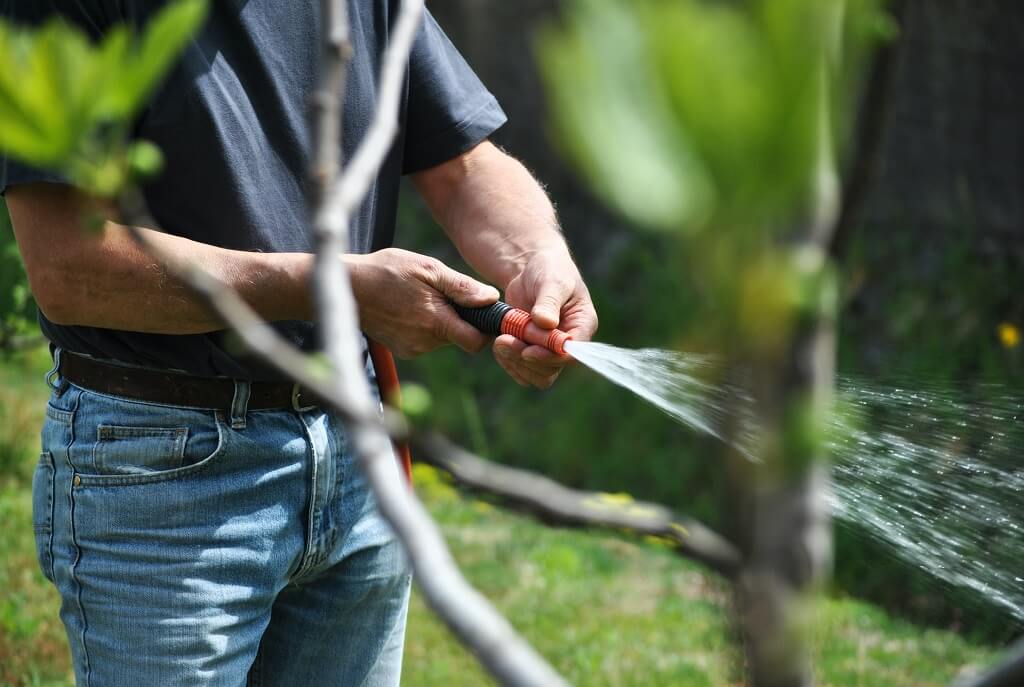When gardening, you’ll want to make sure your plants have access to clean, safe water to help them thrive. Regular tap water contains chloramine and chlorine levels that can hurt your garden; therefore, a garden hose filter is required to protect your plants from these harmful chemicals.
A garden hose filter may assist you in growing a fruitful garden by keeping your soil healthy and providing your plants with the nutrients they require to flourish.
First Time Buyer’s Guide: How to Choose the Correct Hose Filter
When selecting your first water filter for a garden hose, there are a few factors to consider.
Filter Materials
A sediment filter is a good choice for a garden hose filter since it keeps dirt, sediments, pebbles, and other material out of your water supply. The higher the mesh value, the greater the amount of impurities that can be filtered.
If you use municipal water for your garden, you’re undoubtedly dealing with additional chlorine and chloramines to fight bacteria and illness; nevertheless, these chemicals can harm your plants and disrupt the ecology, necessitating the usage of a better filter. To disinfect the water, the finest garden hose filters employ active components.
Water filtration systems have been enhanced by advances in nanotechnology. Copper, carbon, silver, and mixtures of the three minerals have antibacterial characteristics, allowing them to kill bacteria and remove chlorine and chloramines from water. A strong disinfectant that preserves water safety can be created by doping the filter medium with a copper, carbon, or silver-based chemical.
Size
You might have access to the best filter materials in the world, but you won’t be able to use them until you select the appropriate size. Standard garden hoses are compatible with the filters listed above. If your hose is exceptionally large, you’ll need to look into specific filters.
An excessively big filter may cause leaks and may not effectively filter hazardous chemicals. A filter that is too small might harm your hose by causing clogs. Before buying a filter, make sure you measure your hose since the improper size might create a lot of problems in your yard.

The Best Garden Hose Filters
Here are some of the top water filtering systems for garden hoses on the market today. We’ll go through their advantages, disadvantages, and differences from other alternatives.
1. AQUACREST Garden Hose Water Filter
The garden hose filter was designed specifically for garden water, and we upgraded the recipe by adding ion exchange resin. The 5-micron filter aperture effectively reduces undesirable elements like chlorine, odor, and silt while keeping essential elements like nitrogen, phosphorus, and potassium.
The filter may eliminate white water spots created by left over minerals after air drying, in addition to supporting healthy plant development.
The garden hose filter was designed specifically for gardens and may be used for gardening, swimming pools, baths, spas, pet bathing, and more. It’s compatible with the garden mist cooling system as well. The improved formula filters calcium ions more effectively, intercepts contaminants, prevents calcium deposits from clogging nozzles, and extends the atomizer’s life. This is a filter that may be used for a number of purposes on a daily basis.
The long-lasting inline filter can fulfill all of your garden water demands in four months, giving you clean, fresh water, supporting healthy plant development, and assuring the safety of your garden water. It efficiently reduces chlorine odor after watering the garden, protects your family’s health, and creates a safe and healthy environment for children.
2. Clean Water for Your Fun Garden Hose Filter
This top-rated garden hose filter fits most regular garden hoses and can handle up to 10,000 gallons of water. Its antibacterial characteristics are provided by catalytic carbon rather than copper, and the body is made of polypropylene and plastic. While it is not suitable for drinking, it is ideal for use in the garden.
The filtering capabilities of Clean Water for Fun were tested by a third party. It promises to remove organic pollutants by 99 percent and chloramines by 97 percent, both of which are impossible to achieve with most conventional filters. However, several users discovered that while the filter decreased chloramines considerably, it only did so by 90 rather than 97 percent.
They employ carbon derived from coconut shells, which is activated via a steam method. To expand the surface area, activation produces millions of surface micro-pores. The carbon is then coated with a catalyst that breaks the ammonia and chlorine link, resulting in the elimination of chloramines.
TCE, MTBE, PCE, ammonia, chlorine, chloramines, disinfectants, pesticides, herbicides, and trace-level organic materials are all adsorbable by the catalytic carbon filter. Its body is made of a long-lasting polypropylene material that will last you at least a summer.
If you wish to use the filter on a regular basis, you’ll need a connector. Two sets of connections make it simple to connect and disconnect it from your hose, making it ideal for a home irrigation system. The filter was created by Clean Water for Fun for watering your garden, not ponds or aquariums, however many customers have had no problems utilizing it for those purposes.
Although it will not completely destroy germs, this American-made filter may be a fantastic addition to your garden. This filter will be useful if you reside in an area with good water quality but have encountered chloramines.
3. LOVHO Sediment Filter
The LOVHO garden hose water filter also attaches to your pressure washer input or house water faucet to eliminate sediments from the water supply, safeguarding your equipment. This filter was created by LOVHO for rural families, small farms, and those who utilize well water.
It will not remove chlorine or chloramines because it is a sediment filter. If you use municipal water to water your plants, it will not work. If you’re more worried about extra sediments or have a finer filter to purify chemicals, this option may be worth considering. It features a long-lasting metal coupler and body, and it can handle any flow rate with a maximum hose pressure of 80 psi.
Customer service is excellent, and if necessary, they will repair your broken filter. To remove additional contaminants, they recommend using their 100 mesh sediment filter. They will upgrade you to a different choice if you have problems with the 40 mesh filter. LOVHO also offers installation, cleaning, and part replacement assistance to ensure that you have the best possible experience with their goods.
4. Waterdrop RV Inline Water Filter
Waterdrop Inline water filter is NSF 42 approved and has a long durability of 3 months. It provides clean and crisp drinking water with every sip at its finest, allowing you to enjoy outdoor activities to the fullest.
Kinetic Degradation Fluxion (KDF) and Advanced Granular Activated Carbon (GAC) technologies provide very effective multi-stage filtering. It reduces chlorine, bad taste and odor, and particles larger than 20 microns, resulting in cleaner and safer drinking water.
It has an anti-kink flexible hose protector to keep the line from kinking and straining while providing smooth water flow. Any 3/4GHT standard water hose can be used with the hose protection.
Because the Waterdrop inline water filter is made of food-grade materials, no pollutants are leached back into the water, allowing you to drink safe and pure water.
